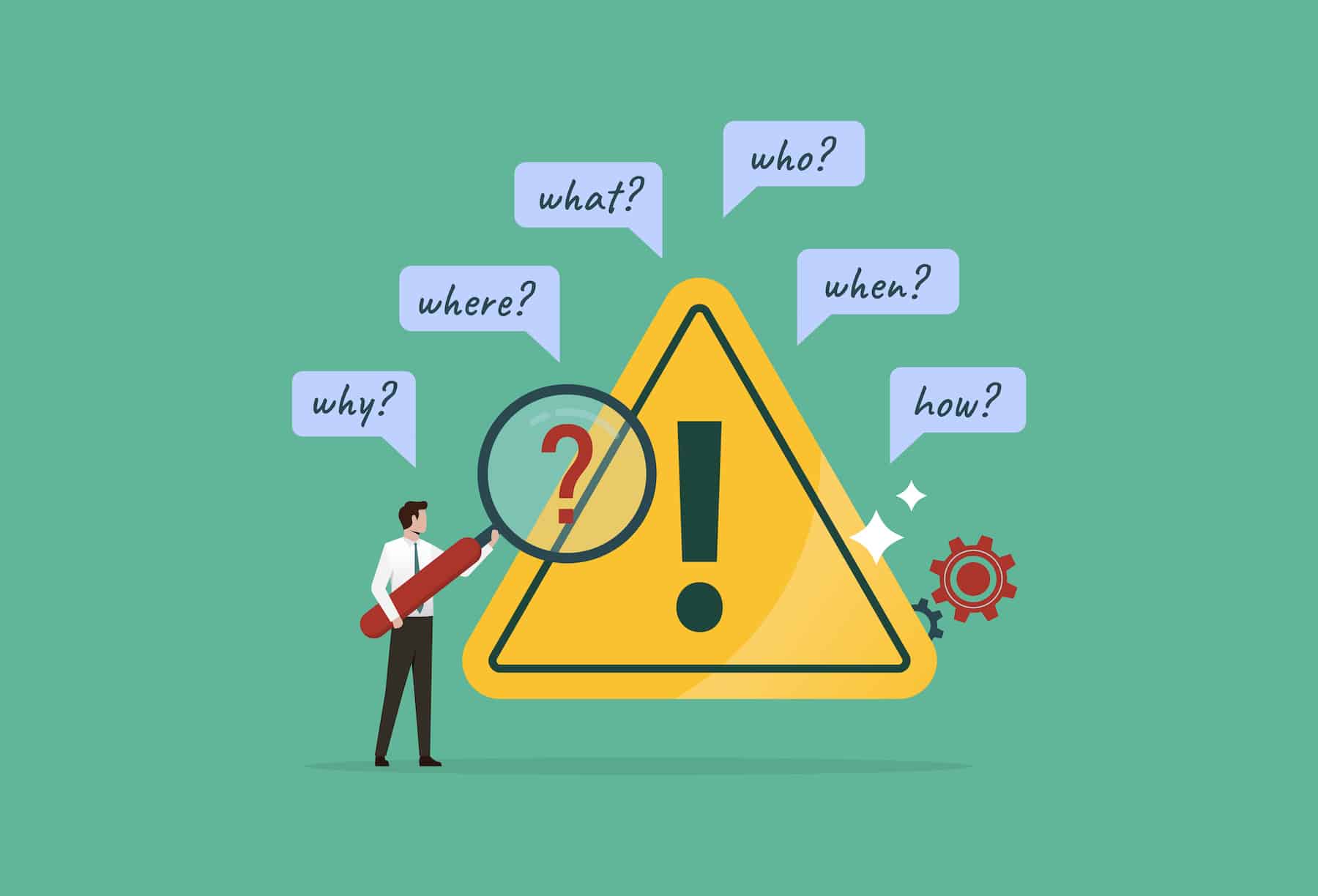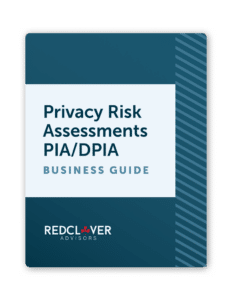If you’ve ever frequented subway lines, whether the London Underground, Singapore’s Mass Rapid Transit, or the New York City Subway, you’re probably familiar with a common phrase: mind the gap. This warning plays in thousands of languages throughout the day, reminding commuters to watch their step as they enter or exit the subway.
Because missteps are easy when you’re distracted.
This is something that all business leaders know. That’s why comprehensive, end-to-end processes are put in place to ensure key operational activities don’t fall through the cracks. You’ve got to mind the gaps.
But are you minding the gaps in your privacy program? Business leaders carry a heavy load. Putting together a privacy program may not be a top priority, or you may not have the expertise to know where to begin.
Not to mention, it’s hard to keep all your departments on the same page with something as complex as privacy.
Let’s look at three privacy activities that can help you avoid gaps and create a sustainable, cross-departmental privacy program: privacy impact assessments, data inventories, and privacy rights processes.
Privacy Impact Assessments (PIAs)
Realistically, you can’t address every single privacy or security issue all at once. You need to prioritize.
To ensure you’re prioritizing effectively, conduct a Privacy Impact Assessment (PIA). A PIA functions like a safety check for your business’ privacy activities. It looks at how personal info travels—whether that of customers, vendors, employees, etg.—through your system and whether it meets (legal, regulatory, or policy) data privacy requirements.
But it’s not just ticking boxes. PIAs help find and address privacy risks, build trust with your customers, and create processes that put privacy first.
PIAs are typically initiated under a few key circumstances. One common trigger is the launch of a new product, service, project, or venture, where assessing risk is crucial. This often leads to updating your data inventory. Another scenario is when a data inventory reveals the need for a PIA to address uncovered risks.
A PIA should reflect your company’s specific needs, but typically it involves:
- Determining applicable jurisdictions: Identify the regulatory requirements based on the jurisdictions where your business operates.
- Incorporating relevant stakeholders: Include departments like legal, IT, marketing, HR, and customer service. Cross-departmental collaboration ensures comprehensive data flow mapping and risk identification.
- Identifying and mitigating risks: Assess system vulnerabilities and implement safeguards.
- Developing a governance plan: Define triggers for PIAs, assign responsibilities, and establish a review process. Clear roles across departments are essential.
- Creating supporting processes and policies: Document the PIA process, including the use of privacy threshold assessments.
Depending on your organization’s requirements and jurisdiction, you might need to update your PIA annually, biannually, or only when requested during an investigation, by regulators, or during a legal or compliance review.
Why PIAs are essential for your privacy program
You can use them as a self-auditing tool and to demonstrate your compliance if needed. They are required in some countries, including those covered by the General Data Protection Regulation (GDPR), and a growing list of states, including California, Texas, and others.
However, even if your company isn’t legally required to conduct periodic PIAs, they’re still a good idea for a few reasons:
- Self-assessment: Conducting PIAs requires you to review your privacy processes and policies across your entire business. You will have to think about how your company will train new employees to address privacy risks and the impact of new products or services on privacy (and vice versa).
- Clearer governance: Good data management means having clear roles and responsibilities across departments to maintain collaboration and accountability. A PIA facilitates this.
- Better processes: PIAs help you see where your processes are not up to par, allowing your company to improve them before problems arise. PIAs also provide the opportunity to level up existing privacy activities.
- Training opportunities: Especially as your company grows, it’s important to ensure all employees completely understand security and privacy processes. PIAs can help you test their knowledge and inform your training efforts.
Privacy Risk Assessments: PIA/DPIA Business Guide
Our Privacy Risk Assessment Guide breaks down the privacy review process with clear, straightforward language.

Data inventories
While PIAs are essential, they aren’t the only tool you need—data inventories are crucial, too. They shine a light on what data you’ve collected (or are currently collecting), how it’s being used (and why), and whether you have the appropriate consents for use and sharing.
A thorough data inventory will ask questions like:
- What types of data are collected, where does it come from, and how is it received?
- Where is the data stored and how is it managed?
- Who has access to the data, both internally and externally?
- How is data processed and used?
- What security measures are in place?
- How long is the data retained and how is it disposed of?
- Does the data cross national boundaries?
- How is the data integrated across the organization?
- What are the specific goals and requirements for the data?
By tackling these questions, you’ll get a solid grasp of your data landscape. This detailed look helps you see how everything lines up with your privacy processes, systems, and regulatory requirements.
Why data inventories are essential for your privacy program
The big picture answer is that data inventories help organizations manage data effectively, ensure compliance with privacy regulations, and identify potential privacy risks. But there are more compelling reasons if we push beyond that (of course, accurate) observation.
Data inventories are valuable privacy activities because they make managing data efficiently across departments easier. By documenting data flows and usage, they improve transparency among employees.
Plus, they help you maintain data quality and make better decisions. In short, having a solid data inventory means you’re not just staying compliant but also setting your business up for responsible growth and trust.
Privacy rights processes
After establishing the importance of PIAs and data inventories, the next crucial element in your privacy program is privacy rights processes. These processes are essential for building trust and demonstrating respect for your customers’ data.
Depending on where you operate, your customers, employees, and others might have rights over their personal data, such as the right to access, request a copy, correct inaccuracies, object to certain processing activities, delete data, restrict processing, limit the use of sensitive personal data, and address concerns with automated decision-making.
To add to the complexity, there are lots of steps that need to be taken to manage these rights:
- Notification: Ensure people understand their rights and how to exercise them. Clearly inform individuals through accessible channels.
- Submission: Provide straightforward methods for submitting requests, such as online forms or email. Ensure these methods are user-friendly and accessible.
- Validation and verification: Develop consistent approaches to validating requests and confirming the identity of requesters. This will ensure requests are genuine and data is protected.
- Response: Establish protocols for timely and accurate responses. Respond promptly to maintain trust and demonstrate accountability.
- Processors and third parties: Ensure your contracts with service providers and third parties include obligations to handle data rights requests. This ensures that all parties involved in data processing are compliant.
- Appeals: Offer a clear process for handling denied requests. Provide a straightforward way for individuals to appeal decisions and address their concerns.
- Recordkeeping: Maintain detailed records of requests and responses to demonstrate compliance and accountability. Accurate recordkeeping is essential for audits and regulatory reviews.
Clearly, privacy rights are…a lot. Having a person in charge of managing these processes can ensure that your organization remains compliant and efficient in handling privacy rights. (And, point in fact, laws like the California Consumer Privacy Act require that this person be sufficiently trained.)
Why privacy rights processes are essential to your privacy program
Having clear, robust privacy rights processes keeps you compliant and builds customer trust and loyalty. When customers see that you respect their privacy, they’re more likely to trust and engage with your business.
Moreover, they ensure compliance with GDPR, CCPA, and/or any of the applicable 19 state privacy laws in the US, which mandate strict handling of data subject requests. By respecting privacy rights, your organization not only avoids hefty fines but also builds a foundation of trust and reliability with customers and stakeholders.
Weaving together PIAs, data inventories, and privacy rights processes
Conducting a PIA, running a data inventory, and facilitating privacy rights processes are all tasks that involve a lot of steps. So, let’s zoom out and talk about a few big-picture ways you can connect them to a holistic privacy program.
Identify a privacy leader
Privacy programs function most smoothly when there is someone leading the charge. Identifying a privacy leader, whether full or part-time, keeps projects moving and ensures accountability. (But privacy is big—ideally, this work is done with the support of a cross functional team.)
The privacy leader should set clear privacy goals, such as regular audits and training sessions. Meet regularly to review and update privacy practices to reflect operational needs, new products and services, and changes in privacy legislation.
Leverage automation tools
Using privacy rights automation tools can make managing a privacy program much smoother. Privacy automation software helps with a range of tasks, from tracking data flows, keeping data inventories up to date, and facilitating privacy rights requests.
Automation tools won’t replace guidance and oversight from experienced team members, but they can reduce manual errors, improve cross-departmental communication, and make it easier to monitor compliance.
Establish a privacy champion network
Pick privacy champions from each department and provide thorough training on privacy laws and company policies. Encourage them to share their knowledge and be the go-to person for privacy concerns. Meet regularly for ongoing education and support. This network ensures that privacy practices are consistently applied and monitored across the organization.
Using outside expertise to build your privacy program
Although PIAs, data inventory, and clear, repeatable privacy rights processes help build an effective privacy program, it’s still a big undertaking. Building your program on your own is doable, but there’s something to be said for calling in the experts.
Reach out to our team at Red Clover Advisors today to schedule a privacy strategy session and to ensure that your privacy program is backed by comprehensive compliance expertise.


